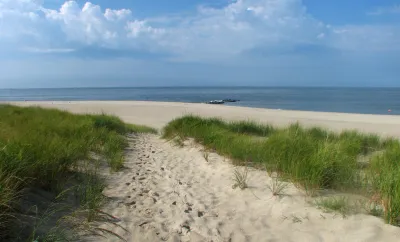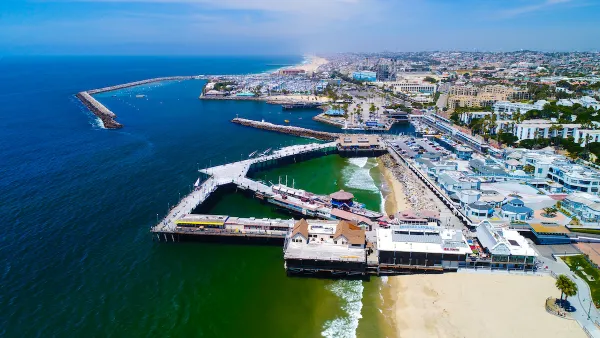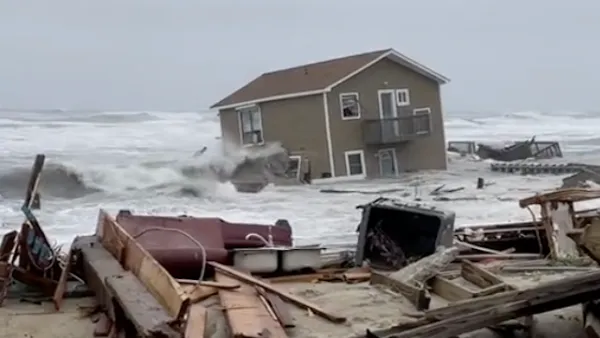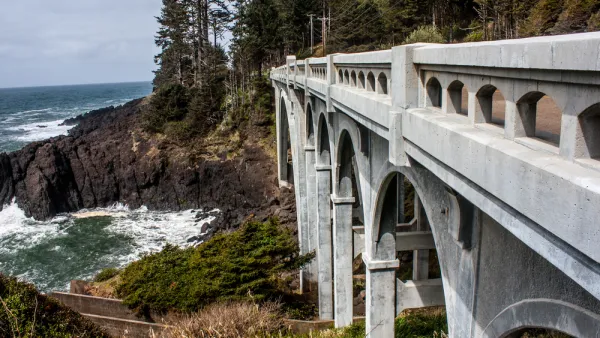In the wake of Hurricane Matthew, a researcher calls attention to the method behind the federal spending on billions of dollars of investment in unsustainable beaches.

Robert S. Young, a professor of coastal geology and director of the Program for the Study of Developed Shorelines at Western Carolina University, takes to the opinion pages of the New York Times to explain the ongoing "beach boondoggle" taking place on the East Coast.
The recent landfall of Hurricane Matthew provides a teachable moment for Young, who notes that the country is responding to the ongoing process of coastal erosion by "trying to hold every shoreline in place forever by pumping sand onto them, largely at federal expense." In fact, a named storm like Hurricane Matthew "can even turn locally funded beach 'nourishment' projects into federally funded ones."
Western Carolina has even created a beach nourishment viewer to illustrate the scale of beach nourishment projects since the early 1990s.
Young argues, however, that the federal funding of beach nourishment is folly. "As sea-level rise continues, and if storms intensify as predicted, the projects will require more sand, and more dollars," he writes. "We are going to run out of both."
While Young acknowledges the arguments in favor of beach nourishment (i.e., "It is true that beach and dune engineering projects benefit local communities. They can protect oceanfront homes and roads while providing a recreational beach for tourists to play on."), he also points out that those benefits are temporary and localized. Moreover, "numerous studies report that the primary beneficiaries of beach stabilization projects are oceanfront property owners."
FULL STORY: The Beach Boondoggle

Analysis: Cybertruck Fatality Rate Far Exceeds That of Ford Pinto
The Tesla Cybertruck was recalled seven times last year.

National Parks Layoffs Will Cause Communities to Lose Billions
Thousands of essential park workers were laid off this week, just before the busy spring break season.

Retro-silient?: America’s First “Eco-burb,” The Woodlands Turns 50
A master-planned community north of Houston offers lessons on green infrastructure and resilient design, but falls short of its founder’s lofty affordability and walkability goals.

Test News Post 1
This is a summary

Analysis: Cybertruck Fatality Rate Far Exceeds That of Ford Pinto
The Tesla Cybertruck was recalled seven times last year.

Test News Headline 46
Test for the image on the front page.
Urban Design for Planners 1: Software Tools
This six-course series explores essential urban design concepts using open source software and equips planners with the tools they need to participate fully in the urban design process.
Planning for Universal Design
Learn the tools for implementing Universal Design in planning regulations.
EMC Planning Group, Inc.
Planetizen
Planetizen
Mpact (formerly Rail~Volution)
Great Falls Development Authority, Inc.
HUDs Office of Policy Development and Research
NYU Wagner Graduate School of Public Service




























